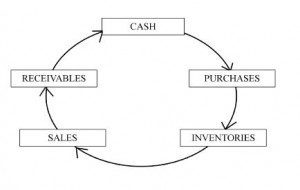Ten Factors that Affect the Cost of a Business Valuation
In the world of pricing, there are simple models (e.g. cost plus a profit markup) and complex models (e.g. dynamic pricing based on real time supply and demand algorithms ). If you have ever purchased an airline ticket online, you’ve seen how a complex model makes prices impossible to decipher. Fortunately, we can offer greater transparency and consistency on business valuation pricing!
Like most professional service pricing models, business valuation pricing is largely a function of the time it takes to do the work. The amount of work involved is driven by the following factors.
Ten Factors that Affect the Cost of a Business Valuation
- Normalization – Most income statements and balance sheets of owner-operated businesses require normalization (adjustments). There are often discretionary and non-recurring expenses to adjust. Owner compensation needs to be investigated and adjusted. Commingled personal expenses and related-party business expenses must be evaluated. Operating assets need adjusting to market values. Non-standard and tax-driven accounting decisions may need to be “undone.” How long all this takes depends on the nature, structure and accounting practices of the business. Sometimes it takes us 10 minutes, other times 10 hours!
- Non-Operating Assets – Some businesses own assets that are not required to run the business. For example, a vacation home or personal vehicles. Or equipment that is no longer used. Or real estate owned by a business that can be removed and rented back. We adjust the balance sheet and cash flows for these items. We may need to separately value these assets or find a specialist to do so.
- Due Diligence – Some businesses are easy to unravel and understand. Others require a deeper dive. Ultimately, we need to understand the business model, how the company compares to industry peers, and its future outlook and risks. Getting up to speed requires independent research and time with the CEO, CFO, CPA or others.
- Forecast Complexity – Without access to a long-term financial forecast, we may need to develop one. Is the company at a steady state and if not, what amount of visibility does management have on the future of the business?
- Industry Niche – Businesses come in all shapes, sizes and flavors. Those that compete in a narrow industry niche that isn’t covered by research firms require us to do custom independent research to evaluate market opportunity and industry outlook.
- Intended Use and Users – The purpose of a valuation affects standard of value, scope of analysis, due diligence and reporting, which affects the amount of appraiser time required. Our website discusses the various uses of business valuations.
- Standard of Value – The standards of value for tax, financial reporting, shareholder oppression, marital dissolution and strategic acquisition are all different, and some are easier to work with than others. This one relates back to intended use.
- Valuation Date – Performing a valuation as of some long-passed historical valuation date requires more due diligence to evaluate market conditions and decide what was known and knowable as of that date. And when a client or their CPA or attorney change the valuation date on us midstream, that adds hours.
- Interest Valued – Minority interests usually have to be discounted for lack of control and marketability, which requires extra analysis and reporting. Valuing interests in companies with complex capital structures (preferred or convertible shares) also requires extra work.
- Timeliness and quality of information – This factor is simple but important. When we receive data quickly that is clear, accurate and concise, our work goes faster. When we have to chase people for information or follow up every answer or document with more questions and requests, projects take longer. Having to put down and pick up a project multiple times because we’re waiting for information is also a big time waster.
How We Price Valuations
At Exit Strategies, our goal is always to provide the right level of service (no more, no less) at a fair and competitive price. We start every potential engagement with a discussion on these 14 topics that helps us understand your needs and propose the appropriate valuation service. A valuation that uses the wrong standard of value for example may be cheap, but useless. You’d be surprised how often appraisers get this wrong.
We quote a fee range for most of our business valuation work. In all cases we endeavor to work as fast and affordably as possible. If you have been quoted a fixed fee for a business valuation, be careful. There’s a good chance that appraiser will use the same cookie cutter methods and spend the same amount of time on your valuation no matter what they find along the way, which is probably not in your best interest. Be sure to get what you need.
Exit Strategies values businesses for a variety of purposes including divestitures, mergers and acquisitions, buy-sell, business divorce, financial reporting, corporate restructuring and exit planning. If you have questions or need a business valuation, contact Joe Orlando at 503-925-5510 or jorlando@exitstrategiesgroup.com or Jim Leonhard at 208-912-0455 or jhleonhard@exitstrategiesgroup.com

 Let’s say you have a headache and you’re walking down the pain relief aisle of your local Walgreens pharmacy. You see
Let’s say you have a headache and you’re walking down the pain relief aisle of your local Walgreens pharmacy. You see 

 Exit Strategies Group, Inc. (ESGI) is pleased to announce that Joe Orlando, ASA, has joined us as Vice President of Valuation Services. Joe will perform the full range of business valuation services for our clients and provide technical leadership to our team of accredited valuation experts.
Exit Strategies Group, Inc. (ESGI) is pleased to announce that Joe Orlando, ASA, has joined us as Vice President of Valuation Services. Joe will perform the full range of business valuation services for our clients and provide technical leadership to our team of accredited valuation experts. Unfortunately, the probable selling price fell slightly short of what the client needed to retire (after taxes). We identified excessive inventory as one of the factors that was limiting enterprise value. How did inventory reduce value and spoil our client’s exit strategy? What can they do resolve this limitation? Read on for the full story.
Unfortunately, the probable selling price fell slightly short of what the client needed to retire (after taxes). We identified excessive inventory as one of the factors that was limiting enterprise value. How did inventory reduce value and spoil our client’s exit strategy? What can they do resolve this limitation? Read on for the full story. Exit Strategies Group is pleased to announce that Ken McCauley, CPA, ABV, has joined us a Senior Business Appraiser in our North San Francisco Bay Area California office. Ken will provide a broad range of business valuation services for our clients. He has been appraising businesses since 2010, including wineries, medical and professional services, software, retail, restaurants, manufacturing, construction, and businesses in other sectors.
Exit Strategies Group is pleased to announce that Ken McCauley, CPA, ABV, has joined us a Senior Business Appraiser in our North San Francisco Bay Area California office. Ken will provide a broad range of business valuation services for our clients. He has been appraising businesses since 2010, including wineries, medical and professional services, software, retail, restaurants, manufacturing, construction, and businesses in other sectors.


